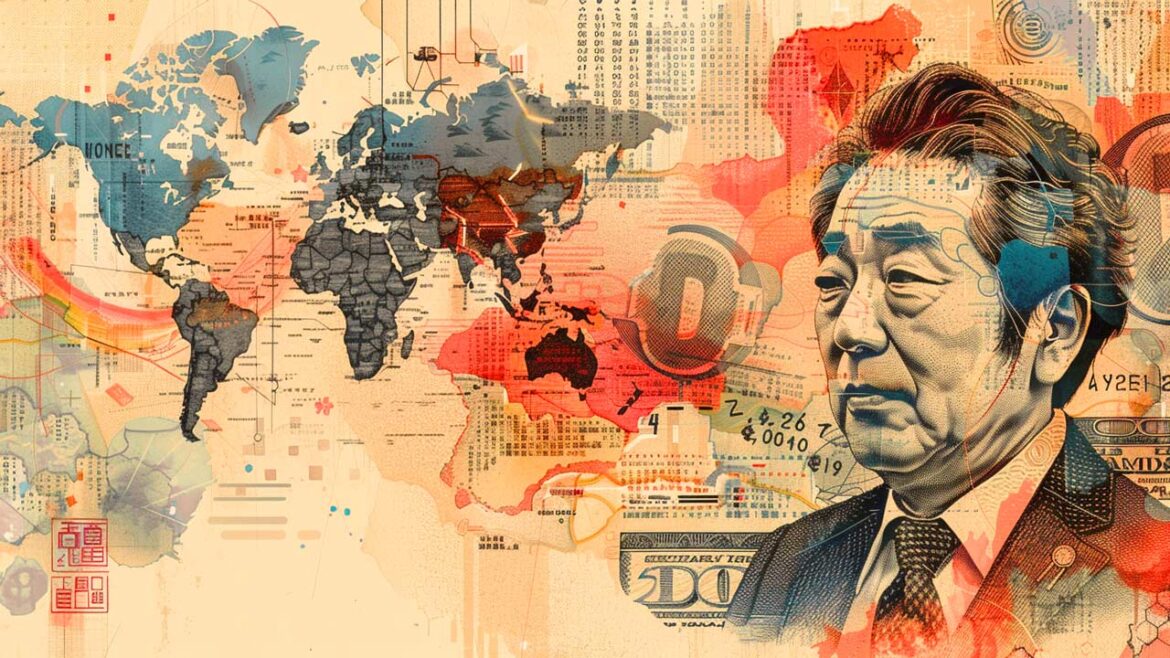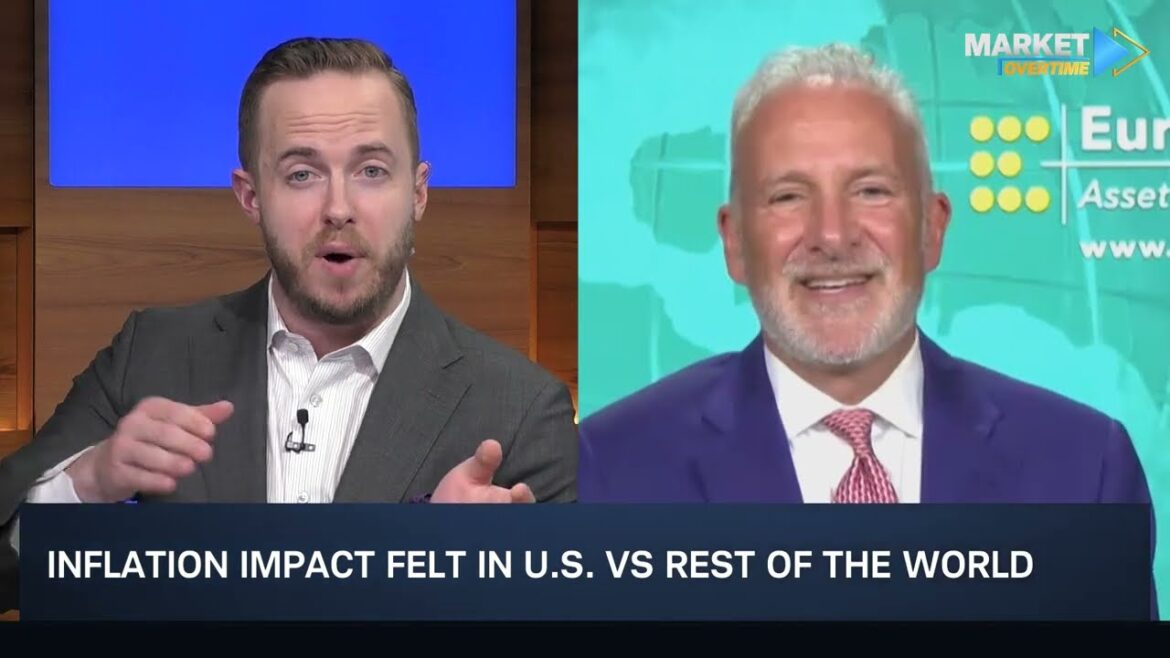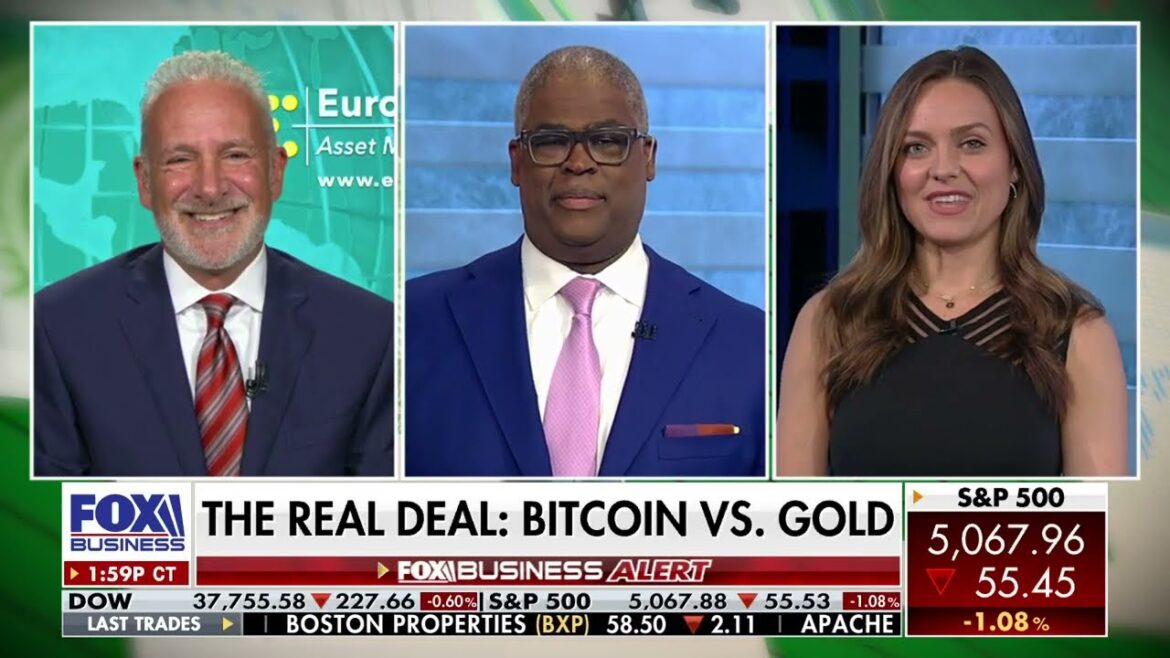Gold has all the potential to go unprecedentedly high. But silver will be gold on
Site:
Precious metals news
Despite Zimbabwe's rich gold reserves, the change in leadership from Robert Mugabe to Emmerson Mnangagwa has not resolved the country's deep-rooted problems. After Mugabe's 37-year rule ended in a 2017 coup, Mnangagwa, his former vice president, took power amid high expectations. However, Mnangagwa's tenure has mirrored Mugabe's, with the economy continuing to stagnate and political oppression persisting. The anticipated revolution has failed to materialize, leaving the country in a state similar to its condition under Mugabe's kleptocratic governance.
Decades of negative interest rate policy in Japan have ended. That could mean the end of the $20 trillion “yen carry trade,” once one of the most popular trades on foreign exchange markets, and a chain reaction in the global economy. The yen carry trade is when investors borrow yen to buy assets denominated in higher-yielding foreign currencies, like the USD, where interest rates are higher.
 METALS MARKET UPDATE APR 18th: Who Is The Mystery Gold Buyer & What's Next For Silver?
METALS MARKET UPDATE APR 18th: Who Is The Mystery Gold Buyer & What's Next For Silver?April 18, 2024
Are the gold and silver prices topping, or will they continue even higher? This is precisely what precious metals investors want to know, as a mystery buyer of gold seems to be pushing it up to new all-time highs...
Traders quickly found loopholes in the new sanctions imposed by the UK and US against Russian metals like aluminum, copper, and nickel on the London Metal Exchange (LME). The sanctions, effective from April 12, prohibit the trading of Russian metals produced after this date on the LME. However, traders are focusing on the substantial stocks of Russian metals already stored in LME’s global warehouses to potentially capitalize on the market.
Federal Reserve Chair Jerome Powell recently stated that the conditions necessary for reducing interest rates are unlikely to materialize soon, given the current economic data. Despite a significant decline in inflation in the latter half of last year, recent figures have not convincingly demonstrated progress toward the Fed's 2% inflation target. Powell emphasized the need for more substantial evidence of sustained inflation reduction before considering rate cuts. Financial markets, which had initially anticipated rate reductions as early as June, are now adjusting their expectations toward September, as reflected in the latest projections from the CME FedWatch tool.
U.S. stocks experienced fluctuations following Federal Reserve Chair Jerome Powell's cautionary remarks indicating that interest rate cuts may be delayed due to persistent inflation concerns. During a discussion at the Wilson Center, Powell expressed that recent data did not bolster confidence in quickly reaching the Fed's 2% inflation target, suggesting a more prolonged period of high rates. This led to mixed results in the stock market, with the Dow slightly up by 0.2%, while the S&P 500 and Nasdaq both declined. Concurrently, the 2-year Treasury yield briefly crossed the 5% mark, underscoring the market's reaction to the anticipated continuation of restrictive monetary policy.
The opinion piece argues that the Federal Reserve Chair Jerome Powell's focus on cutting interest rates may be misguided, given the persistent uncertainty around inflation returning to the 2% target and the growing concern over the federal deficit. The article suggests that lowering rates could exacerbate inflation, especially as significant investments by the Biden administration in manufacturing sectors like electric vehicles and semiconductors are already boosting factory construction, potentially fueling further inflationary pressures.
The U.S. dollar's resurgence significantly impacted emerging-market currencies, particularly after China's decision to lower its yuan reference rate. This move intensified selling pressures across Asia, notably affecting the Indonesian rupiah, Indian rupee, and South Korean won. The ripple effect of the dollar's strength was felt globally, driving a key index of emerging-market currencies to annual lows and causing corresponding declines in stock markets. In response to severe depreciations, Bank Indonesia intervened to support the rupiah as it crossed 16,000 per dollar for the first time in four years, and South Korean authorities warned against the economic risks of rapid currency fluctuations.
Apr 17, 2024 - 15:13:45 EDT
The Biden-Harris Administration has unveiled its initial draft rules aimed at providing student debt relief to tens of millions of borrowers nationwide. Announced last week in Madison, Wisconsin by President Biden, these proposals could potentially increase the total beneficiaries of the administration's relief efforts to over 30 million people. To date, nearly 4.3 million borrowers have benefited from approximately $153 billion in debt cancellation under various programs initiated by this administration.
As the Union and Confederate armies faced off during the Civil War, an equally fierce economic battle waged behind the scenes, ultimately deciding the war's fate.
Gold is up, influenced by macroeconomic uncertainty, including tensions in the Middle East and the Federal Reserve’s stalled inflation measures. Despite this, gold is perceived as the most overvalued since August 2020, according to a Bank of America Fund Manager Survey. Although a net 26% of respondents believe gold has over-appreciated, there is still optimism, with projections suggesting a potential 25% to 50% increase in value over the next few years. However, 78% of fund managers see a global recession as unlikely within the next year, reflecting a more optimistic economic outlook compared to market behavior.
Nine people have been charged in connection with the largest gold heist in Canadian history, which occurred at Toronto’s Pearson International Airport last year. Peel Regional Police reported that 6,600 gold bars, valued over 20 million Canadian dollars, along with 2.5 million in various foreign currencies, were stolen. The stolen gold was later melted down and used to buy illegal firearms. Among those charged are an Air Canada warehouse employee and a former manager, who even guided the police on a tour of the cargo facility post-theft.
In a recent interview with CNBC, Pierre-Olivier Gourinchas, the International Monetary Fund's economic counselor, assessed the risk of a global recession as "fairly minimal." He highlighted several positive factors, such as robust economic performance in the U.S. and various emerging markets, and a quicker-than-anticipated decrease in inflation, despite some growth sluggishness in Europe. However, he cautioned that increasing tensions in the Middle East could pose risks to global economic stability.
Apr 17, 2024 - 14:31:55 EDT
The article highlights the intense activity in China's gold markets, particularly at the Hualin International Jewelry Market in Guangzhou, amid a surge in gold prices. As traditional investment options like stocks, property, and banking lose their appeal due to increased uncertainty, gold has become a popular safe haven for investors. This shift has brought an influx of buyers, including many from China's middle class and younger demographics, and has led to a significant rise in the number of gold stores within the market.
Peter recently appeared on Market Overtime with Oliver Renick for an interview. In their wide-ranging discussion, Peter speaks on monetary policy, the reliability of inflation data, and reasons to avoid Bitcoin.
In basketball, a "heat check" is when a player, emboldened by a series of successful shots, opts for a challenging attempt to gauge the persistence of their scoring spree. Today, we'll do our own financial "heat check" in the precious metals market, to assess whether the recent upward trend is set to continue.
Peter recently appeared on Fox Business to discuss Bitcoin’s recent performance. In this segment, he takes on Natalie Brunell, host of the podcast Coin Stories, in a friendly debate on the merits of crypto and precious metals.
Gold prices have remained stable near record highs despite the Federal Reserve Chair Jerome Powell's recent remarks suggesting that interest rates may be maintained for a prolonged period. This year, gold has appreciated by about 15%, bolstered by safe-haven demands due to escalating geopolitical tensions in the Middle East and Ukraine. Even though rising Treasury yields and a stronger dollar typically undermine gold's attractiveness, the metal has continued its upward trend, surprising many observers. This resilience is supported by significant central bank purchases and growing demand from Chinese consumers. As of the latest trading session in London, spot gold was priced at $2,382.40 per ounce, nearing its peak of $2,431.52.
Gold prices have held steady near record levels this year, gaining about 15% amidst ongoing geopolitical tensions in the Middle East and Ukraine. Despite a recent statement by Federal Reserve Chairman Jerome Powell indicating that interest rates might remain higher for an extended period due to persistent inflation, gold continues to attract safe-haven investments. This resilience comes even as Treasury yields and the dollar have risen, which typically dampens gold's appeal. The metal's sustained uptrend, in the face of higher borrowing costs and a stronger dollar, has caught the attention of market analysts.
Dominic Schnider, head of global commodities and foreign exchange at UBS Global Wealth Management, discusses the prospects for commodities including copper, gold and silver. He speaks on "Bloomberg: The China Show." Source: Bloomberg











